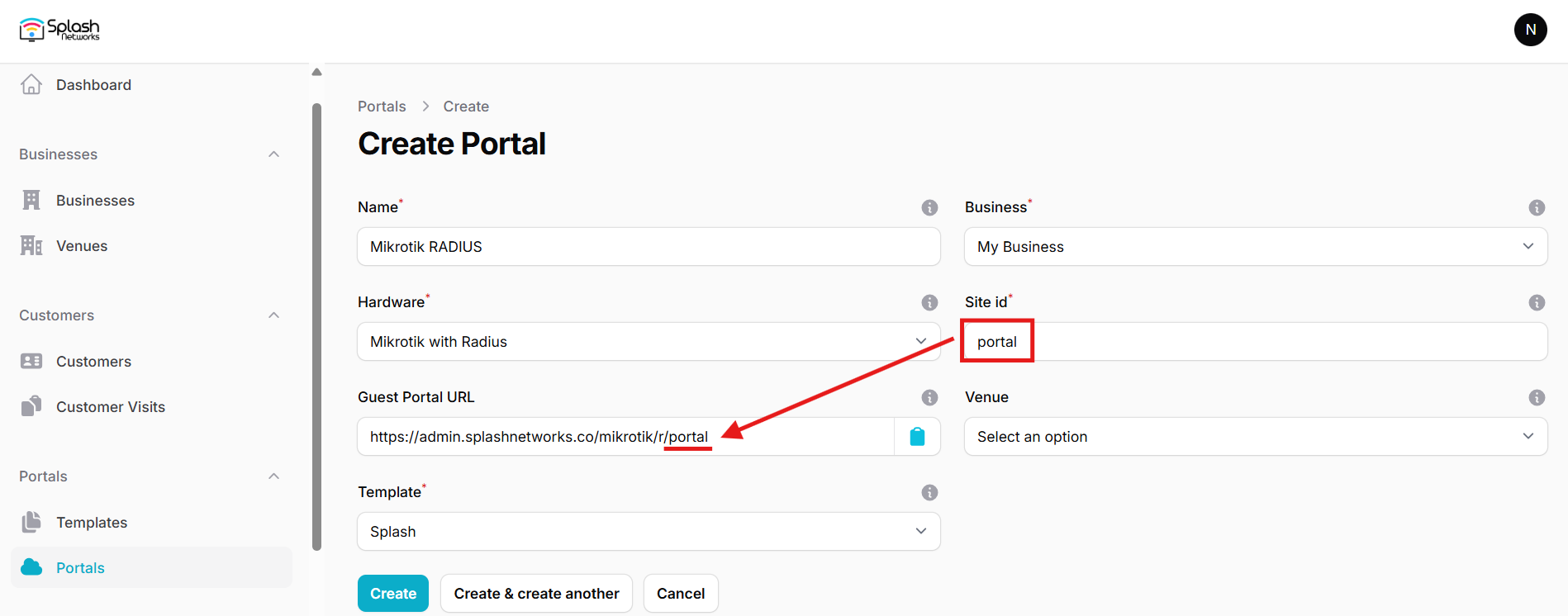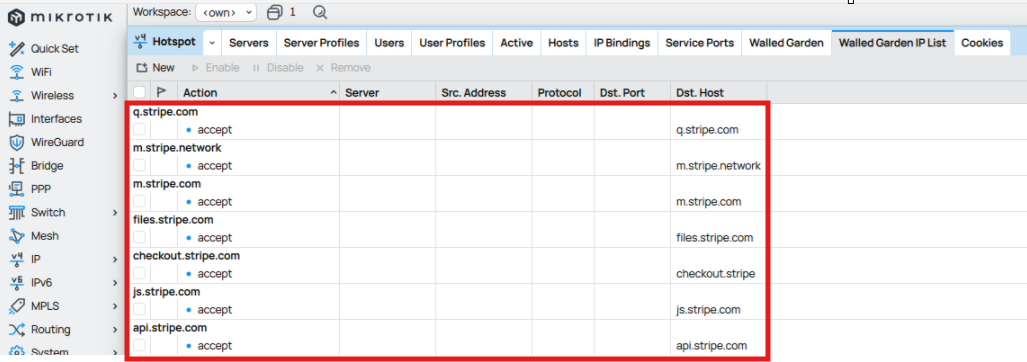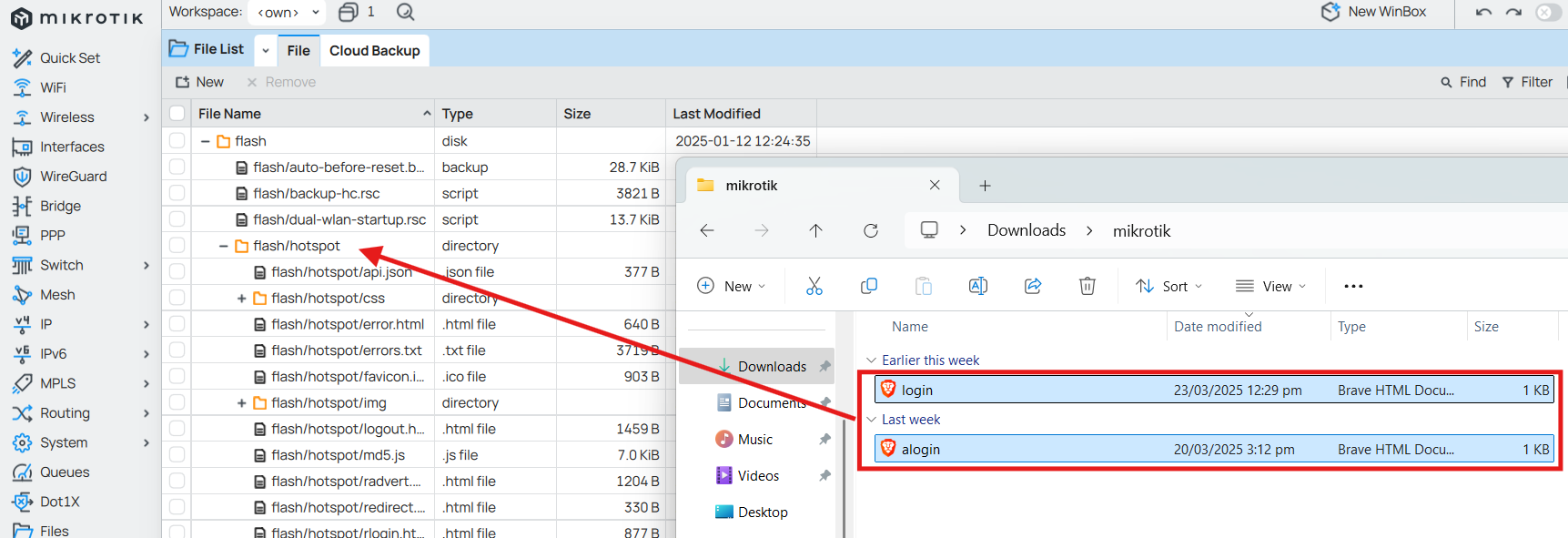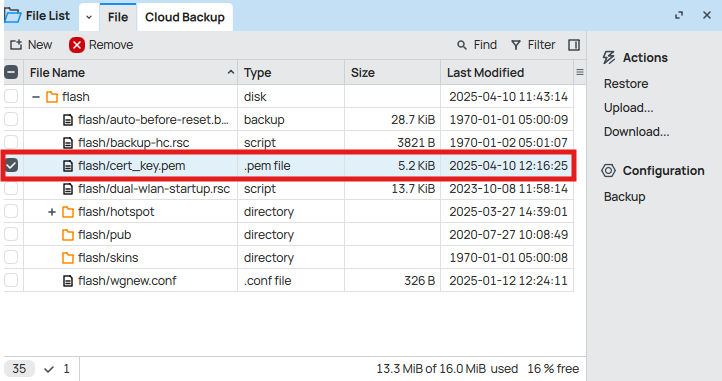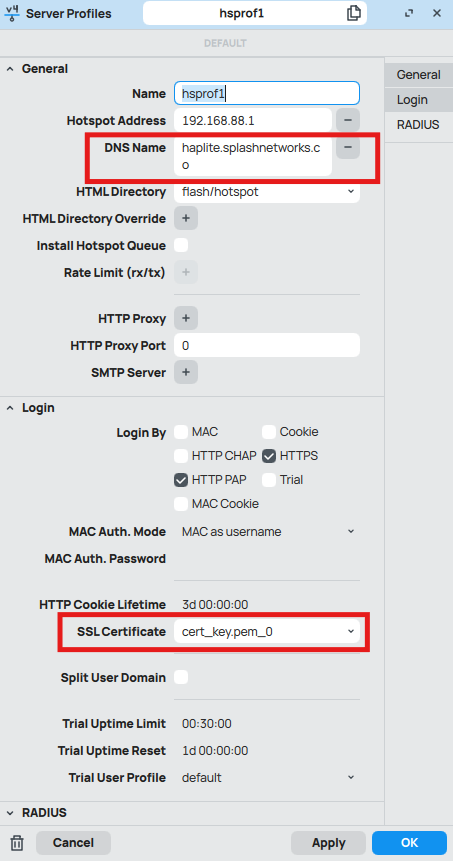Mikrotik with RADIUS
It is recommended to use RouterOS v7 for best results.
To set up a portal for Mikrotik first you need to create a template.
Add a Portal
To create a portal go to the Portals tab and click on the New portal button. Enter a name for the portal, and in Hardware select Mikrotik with RADIUS. Then, enter a Site ID based on which the path of the portal URL will be defined.
The Guest Portal URL will be created based on the URL of the Splash Air application followed by the path given by Site ID. Note this URL as it will be required later.
Select the venue and template and click on the Create button.
Portal Settings
You can go to Portals to view the settings for the portal(s) just added.
Clicking on a portal takes you to the details for that portal. It lets you specify additional settings:
Business Name: name of the venue which will be displayed on top of the portal
Redirect URL: the URL a user is redirected to after successful portal authorization
Expiry: the time in days after which a repeat user will have to enter their data again on the portal
Duration (seconds) after email verification: when using "Link" type Flow it is the "Session-Timeout" a user will receive via RADIUS after successful email verification
You can click on the Edit button against each entry to modify it if needed.
Mikrotik Settings
Before setting up Hotspot on Mikrotik it is important to enable access from WAN side, otherwise you would be locked out of the system once Hotspot is enabled.
Access your Mikrotik router using Winbox. Go to IP > Firewall and disable the following rules that block access from WAN:
Go to IP > Addresses and note your router's WAN IP (usually WAN interface is ether1). Connect to your Mikrotik router through WinBox using this IP before proceeding further.
Hotspot Setup
Go to IP > Hotspot and click on Hotspot Setup.
A series of dialog boxes will appear. Select the following options:
- In HotSpot Interface select bridge and press Next.
- In Local address of network keep the default option and press Next.
- In Address Pool of Network keep the default option and press Next.
- In Select Certificate select None and press Next.
- In IP Address of SMTP Server keep the default option and press Next.
- In DNS Servers keep the default option and press Next.
- In DNS name type nothing and press Next.
- In Create local HotSpot user, keep Name
adminand password blank and press Next.
The setup is now complete. Go to IP > Hotspot > Server Profiles and select hsprof1 profile. In Login tab check HTTP PAP option and uncheck all other options. Click OK to save settings.
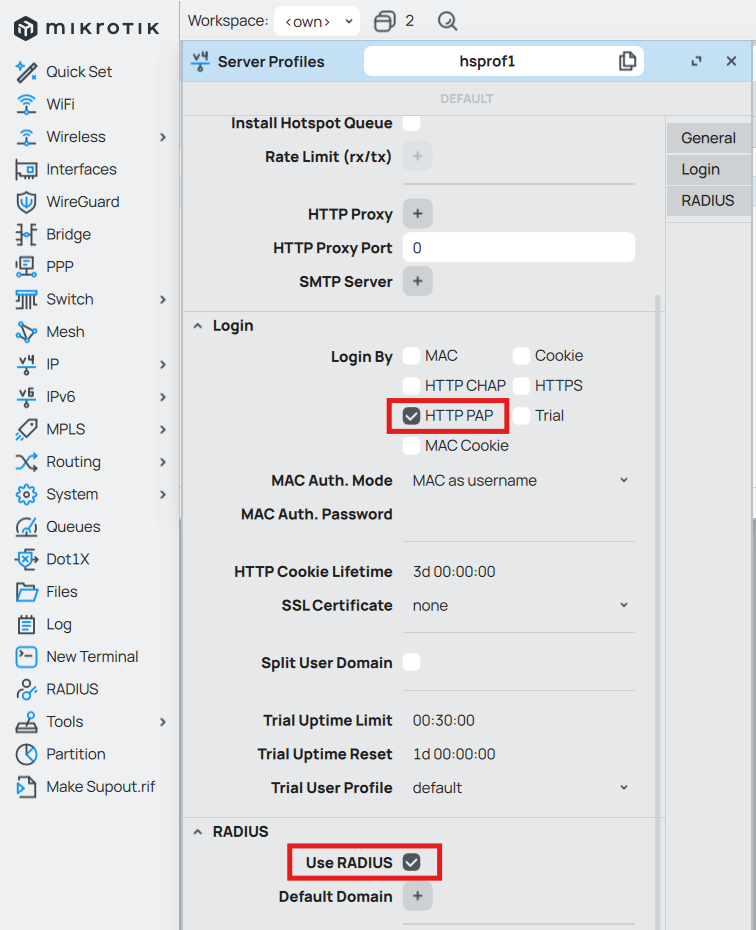
In IP > Hotspot > User Profiles open the default profile and disable MAC Cookie. Change the number of Shared Users to the maximum number of devices that you want to be connected to the hotspot simultaneously.
Go to IP > Hotspot > Walled Garden IP List and create a new entry. In Dst. Address add the IP address of your Splash Air server and click OK.
If using Payment Flow then you need to add walled garden entries for your payment gateway entries to Walled Garden IP List:
Go to RADIUS and click on New to add a new RADIUS server. In Service select hotspot and enter the Address and Secret of the RADIUS server.

Portal Files
Download this file and unzip it. Open the login.html file in a text editor. The Guest Portal URL generated earlier should be pasted in the form action field as shown below:
Go to Files and in Hotspot select login.html and alogin.html files and remove them.
Replace them with the files on your computer by dragging and dropping them into the hotspot directory:
Avoiding Browsing Warning on Laptops
When using captive portal on laptops and desktops you may receive a browser warning like this about information being submitted insecurely:
To avoid this you need to import a TLS certificate to your Mikrotik router. You can get one for free using Let's Encrypt. Here is the process for installing it to your router.
Combine your certificate and key into one consolidated file and upload that to your router:
Go to System > Certificates and click on the Import button. Select the file you just uploaded, make sure the Trusted option is checked and click Import.
The imported certificate will be shown. In our case we are using a wildcard TLS certificate generating using Let's Encrypt.
Go to IP > Hotspot > Server Profiles and select hsprof1 profile. Enter a DNS name for your router (the respective DNS record should also exist and point to any of the interface IPs on Mikrotik). In Login section enable HTTPS and in SSL Certificate select the certificate imported in the previous step.
Troubleshooting
To troubleshoot problems it is important to understand the components involved in the captive portal user authorization process and the interactions between them.
Traffic Flow
Here is the traffic flow in the case of Mikrotik with RADIUS:
